Attractions Nearby Huancayo, Day Trips and Excursions
(Huancayo, Junin, Peru)
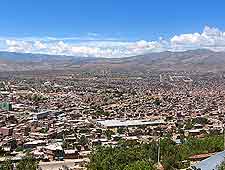
There are a number of different tour operators in Huancayo currently offering day trips to the many villages and surrounding attractions in the valley and throughout the Junin Region. Huancayo is very centrally located in
Peru and therefore a wealth of attractions is within reach, in all directions.
Although it can be quite difficult to finally reach Huancavelica, many tourists choose to make this excursion from Huancayo, coming to appreciate its mountain scenery, beautiful churches and ancient Inca attractions, since this small city was once actually a very strategically placed element of the Inca empire. Also worth checking out is
Lima, which is quite unlike any other city in Peru and is simply an enormous, slightly bewildering metropolis, lying to the west.
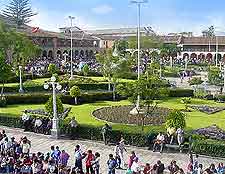
Ayacucho
Ayacucho is without question one of the more appealing Andean cities and is to be found to the south-east on Huancayo, close to Abancay. Those visiting Ayacucho will be treated to innumerable
colonial buildings, many historical churches and some very important archaeological attractions. The
museums in Ayacucho are especially good and art lovers will appreciate spending time at the
Museo Arte Popular, while those visiting this city at Easter time will be able to enjoy some of the best Holy Week (
Semana Santa) celebrations in the whole of Peru.
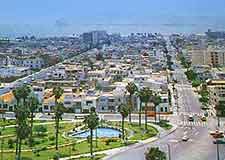
Callao
The port city of
Callao is often referred to as being a suburb of Lima, due to its close proximity and relationship with the Peruvian capital. Callao lies directly to the west of Huancayo and does offer some very good reasons for spending time here.
Attractions around the city could certainly be described as varied and include the historical fortress of the
Castillo de Real Felipe, National University of Callao, the monuments of Bolivar and Grau, and the very good
Navy Museum, which is brimming with local maritime history.
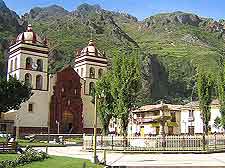
Huancavelica
Today, the attractions of the Inca city of Huancavelica come in the form of churches and the Instituto Nacional de Cultura (INC), which stands on the Plaza San Juan de Dios and features its very own museum, complete with Inca artefacts. Also in Huancavelica are the San Cristobal Mineral Springs, which are known for their natural healing properties.
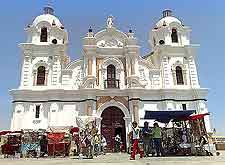
Ica
Ica is really within easy reach of Huancayo and sits to the south-west, being close to both Nazca and Pisco. Famed for its thriving wine industry, Ica boasts a fairly elevated setting, which has the distinct advantage that it stands above the incoming coastal mist, offering plenty of dry and sunny weather to go around. Although the wines from Ica can be purchased from various outlets and attractions around the central Plaza de Armas, many visitors prefer to pay a visit to the actual neighbouring wineries (bodegas) themselves and try a spot of wine tasting.
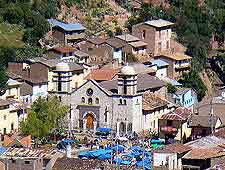
Izcuchaca
The village of Izcuchaca is sandwiched between both Huancavelica and Huancayo, and has a small number of fairly basic attractions that you may be wish to explore if you are passing by. Izcuchaca's archaeological ruins can only be accessed on foot and serve as a major draw card, although others prefer the hot springs, the pottery centre on the very historic bridge, which some say was constructed by the Incas many years ago.
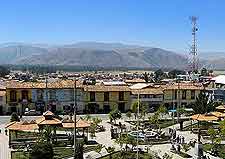
Jauja
Head to the north of Huancayo and you will soon come upon Jauja a friendly town situated around 40 km / 25 miles away. Jauja is also close to La Oroya (80 km / 50 miles) and Tarma (60 km / 37 miles), and has a small selection of enticing attractions. On the south-easterly outskirts of Jauja, the Huanca ruins warrant a look, as does the nearby lakeside resort of Laguna de Paca, where rowing boats can be hired for a nominal charge. Many lakeside restaurants await on the lakeshore of Laguna de Paca, trying to entice you inside with their tempting menus and cooking smells.
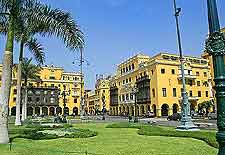
Lima
Home to over eight million residents, Lima's
attractions are spread all over the city, being clustered in its main districts of Barranco, Miraflores, Rimac, Santa Beatiz and San Isidro. A good selection of
beaches line the coastline of Lima, with the Playa Aqua Duce, the Playa Costa Verde and the Playa la Herradura being just some of the most popular. There are also a huge number of
museums spread around Lima, and the
Museo de Arte is a renowned gallery where pre-Columbian artefacts are also exhibited.
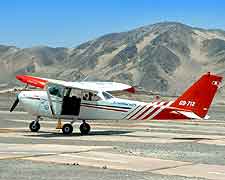
Nazca
The mysterious destination of Nazca has grown into something of a tourist hotspot and is known to many around the world for its enormous carved lines and figures, which are spread all over the desert ground. Nazca is located to the south of Huancayo and the sheer scale of its elaborate lines are hard to fully appreciate, unless you are prepared to fork out for a plane ride (overflight) from the aerodrome, where bird's-eye views really begin to put the shapes into context. Also of note is the observation tower at Mirador, some 20 km / 12 miles north of Nazca.
Open hours: daily - 09:00 to 17:00
Admission: charge for tours
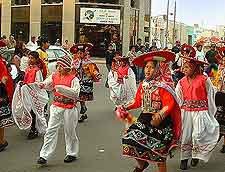
Pisco
South of Huancayo is the coastal town of Pisco, some 235 km / 146 miles to the south of Lima. Pisco is home to a very prominent port and most tourists tend to use the town as a convenient base to explore the rich wildlife attractions on the nearby Islas Ballestas, where boat tours are offered by a number of local travel agencies. Particularly noteworthy on the Islas Ballestas are the sea lions, Humboldt penguins, Peruvian pelicans, occasional dolphins and the epic 150-metre / 490-foot high Candelabra geoglpyh, which is though to be connected to the Nazca lines. Also of interest is the Peninsula de Paracas, and it was here where the highly advanced Paracas culture once lived.
Rio Mantaro Valley
There are actually two separate roads connecting Huancayo with the villages around the Rio Mantaro Valley. These roads are named in relation to the river, being known as the Izquierda (east) and the Derecha (west). Most tourists choose to spend their time exploring the attractions on just one side on any given day, since bridges are in scarce supply. On the eastern side of the Rio Mantaro Valley, the villages of Cochas Chico and Cochas Grande stand out in particular, being famous for their carved gourds. Nearby, other handicraft villages include Hualhuas, San Agustin de Cajas, and also Jeronimo de Tunan.
 There are a number of different tour operators in Huancayo currently offering day trips to the many villages and surrounding attractions in the valley and throughout the Junin Region. Huancayo is very centrally located in Peru and therefore a wealth of attractions is within reach, in all directions.
There are a number of different tour operators in Huancayo currently offering day trips to the many villages and surrounding attractions in the valley and throughout the Junin Region. Huancayo is very centrally located in Peru and therefore a wealth of attractions is within reach, in all directions.







